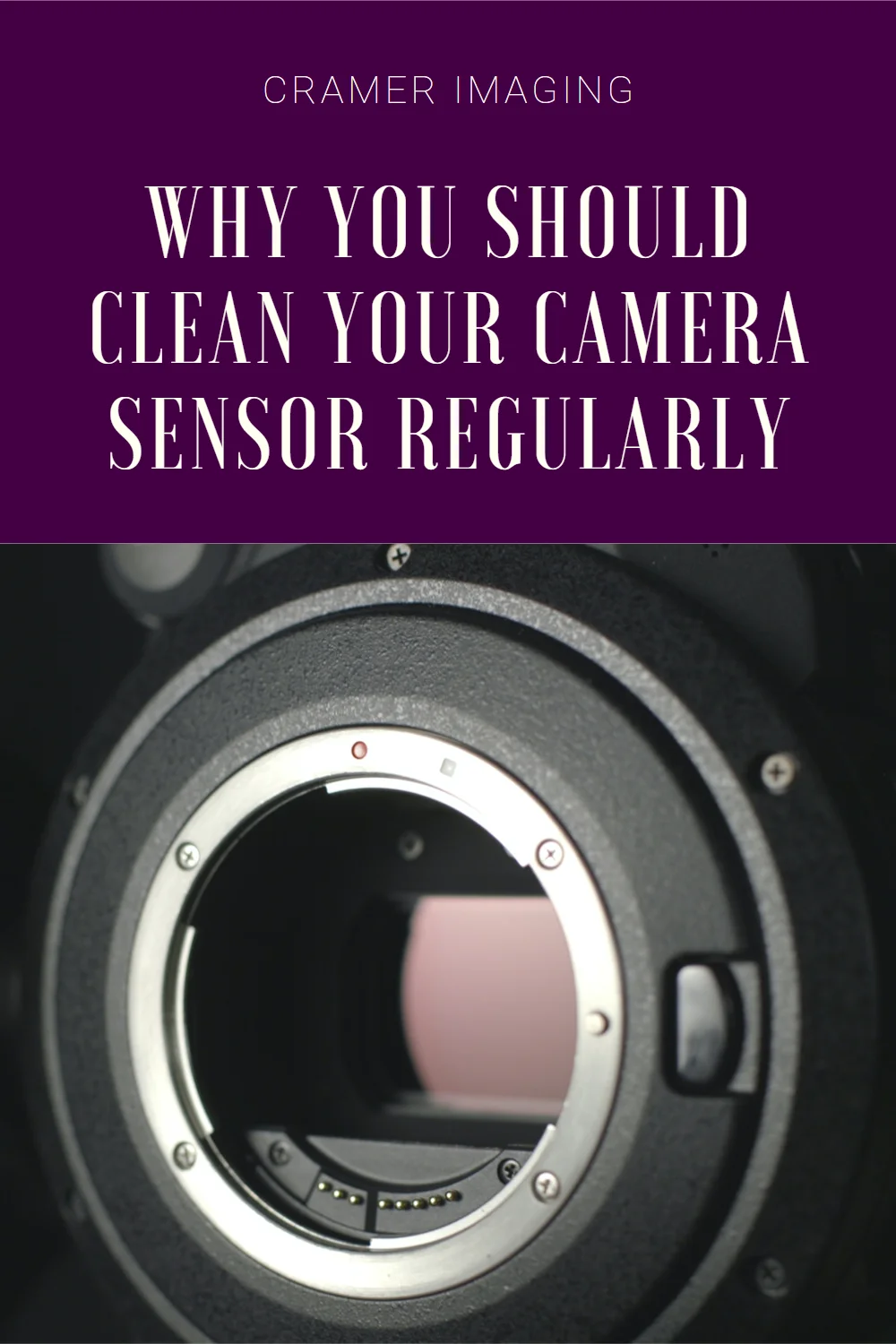Why You Should Clean Your Camera Sensor Regularly
Shop

Have you ever taken a photo and seen a bunch of unwanted spots in the frame? I have. Usually it means that I need to clean off the camera lens to get rid of some dust. However, there are times when that solution will not fix the problem and the dust spots remain. There is another place on the camera which requires cleaning and should be handled by professionals when you do have it cleaned. That place is the camera sensor.
What is a Camera Sensor?
A camera sensor is a part of the camera’s hardware. It’s the place in the camera where the light is focused on and where the picture is captured. It detects all the different wavelengths of light and renders the colors of the image. It’s thanks to this sensor that you can see a preview of your photo on the screen.

Why Should I Care?
The camera sensor is a delicate piece of equipment. It is also electrically charged so it can easily attract fine particles of dust. If left in a dirty state for long enough, the particles of dust which accumulate on the sensor can eventually do damage to it by scratching the surface. Then you’re looking at an expensive replacement cost (in the thousands-of-dollars range) as you should NOT attempt to replace a camera sensor yourself without the proper training and equipment.

For most point-and-shoot cameras or smartphone cameras, you never need to worry about the sensor because it’s entirely enclosed in the device so it won’t get dirty. It’s the SLR or DSLR cameras, with their interchangeable lenses, that you have to worry about sensors getting dirty.
How Do SLR Camera Sensors Get Dusty?

If you own an SLR or a DSLR camera, then you are already acquainted with the concept of changing your current camera lens for a different one. Field expedient lens changes happen frequently if you are a serious photographer. Perhaps you want a wider angle or a more magnified view. Perhaps you want to shoot something at a more macro scale. No matter what your intentions with a photo, you know about changing the lens on your camera.
No matter the reason, when you change that lens out for another, you expose the sensor to the environment. This means that dust can and will get into the sensor. Since the sensor is statically charged, the dust particles are attracted to and will stick to your camera’s sensor.
Dust build-up gets really bad when you change lenses in windy conditions or in a particularly dusty area. However, all SLR camera varieties (DSLR included) will eventually accumulate dust on the sensor no matter what or how many precautions you take. It just happens due to the nature of how the camera works. When that does happen, you will need to get your camera sensor cleaned to regain clear photos again.
How Do I Clean My Camera Sensor?
If you’ve already got problems with dust spots which won’t go away no matter how many times you’ve cleaned both sides of your camera lens, then you’ve probably got a dirty sensor. You’ve got a couple of options when it comes to cleaning it. You can try to do it yourself or you can get your camera sensor professionally cleaned.

Your main advantage for DIY is cost. Your main advantage for hiring a professional is risk aversion.
DIY Methods

- If you want to take your camera sensor on the do-it-yourself cleaning path, then you can try using a air bulb such as this rocket-shaped one to gently blow the dust off of the camera sensor. Such air bulbs are cheap, at least as camera equipment goes, and should handle light amounts of occasional dust well. I recommend having your camera turned off when you do as the sensor will be charged and retain the dust if the camera is on.
- You can also look for an online tutorial for cleaning your camera sensor. There are several tutorials available on websites like YouTube to help you learn how to clean this delicate piece of camera equipment. I recommend caution when attempting to clean your camera sensor using a method you found online. If you aren’t careful, you can scratch or do other kinds of damage to your camera sensor and the replacement bill (as stated above) is very expensive.
Hire a Professional

Your other option for cleaning your delicate camera sensor is to find a professional to do it for you. The professional should be properly equipped to handle the task and should replace your sensor, at no charge to you, if he or she ends up doing something really wrong during the process.
If you go for this method of cleaning your camera sensor, make sure that you do your research. Find a dealer who knows what they are doing. Also, be prepared to leave your camera at the shop for a few days as the individual doing the sensor cleanings will probably do them in batches. When the shop is done, they should give you a call to come collect your camera back.
Take your camera in with a full battery charge since the professional will be doing testing and will not want to stop the process in order to charge your battery should it die.
Why You Should Clean Your Sensor Regularly

Since your SLR or DSLR camera will not be kept in a clean room environment, you need to get it cleaned regularly to prevent dust building up on the sensor. I went for several years before I had my sensor first cleaned and the dust build-up became evident quickly. You can see the evidence of that neglect in the dusty photo above. It was bad.
Experts recommend that you get your camera sensor cleaned at least yearly. This will keep the accumulation of dust from getting to the point where mine was before the cleaning. If you can’t do a cleaning annually, try for a cleaning at least every two years. If you can’t hire a professional, then at least do some thorough cleaning on your own with the air bulb.
Should you find yourself doing some shooting in a particularly dusty or windy area, then you really should consider getting the sensor cleaned just after you’re done with the shoot. This is because your sensor has been exposed to an abnormally large amount of flying dust and there will be much more dust on the sensor than normal. Your own efforts might not be enough in these kinds of circumstances. You might need to hire a professional to clean your camera sensor.
Conclusion
All camera sensors are delicate pieces of equipment which can suffer damage at the hands of dust. Camera sensors in SLR and DSLR cameras are vulnerable to dust because of the interchanging lenses. Thanks to this design, they require regular sensor cleanings. You can choose a DIY method or have a professional clean the sensor for you. Either way, you should have this done annually if you can in addition to right after shooting in especially dusty or windy locations.
With proper care and cleanings, your camera sensor should remain relatively free of dust and your pictures should remain free of those annoying black dust spots. If you haven’t gotten your camera sensor cleaned in a while, you should really look at doing so. It’s not a particularly expensive process (mine was $45 US) and it can save you from the far more expensive sensor replacement cost in the long run.
Best Sellers
Cramer Imaging Newsletter

Receive monthly updates in your inbox from us.





